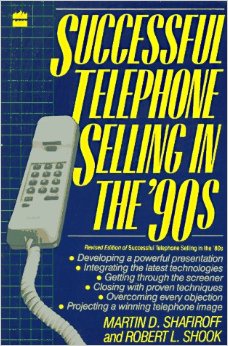The Wolf of Wall Street Aerotyne Phone Sale
Listen to the audio version of this post here.
Merril Lynch announced it will no longer train each class of 3,000 newbie brokers in the ancient art of cold calling.
Their decision was made not because it was 1) annoying and intrusive; b) full of conflicts of interest; or iii) a terrible way to make investment decisions, but rather because so few people bothered to answer a call from an unrecognized telephone number. (Lifehack: Set your mobile phone so unknown callers go straight to VM; it’s a gamechanger).
Regardless, cold calling has an interesting history. Finance was mostly a clubby, chummy network, where proximity to old money mattered more than actual financial knowledge. There was for sure a place for the investing skillful, but the “Account Men” (aka sales) was not that department.
Things began to change after the Depression and market collapse. In Forbes Greatest Business Stories of All Time, Dan Gross writes:
“Charles Merrill worked hard to restore the public’s shattered trust in the capital markets during the Depression, his firm’s large army of account executives developed a populist image, for which they acquired the sobriquet ‘The Thundering Herd’ and . . . strived to fulfill its leader’s long-standing goal to “bring Wall Street to Main Street.”
Post-war America began to come into its own. Merrill’s retail training program dates to 1945 to capitalize on that new growth. The company had huge success selling stocks to middle America, contributing to the post-war accumulation of wealth of that generation. But retail stock telemarketing did not become a bull market itself until the 1980s bull market in stocks was well underway (1982). It really hit its stride in the 1990s, when lots of people wanted in, culminating in the dot-com bubble, and crash.
 As Markets evolved over time, so too have sales brokers had to adapt their favored techniques. The idea of cold calling was greatly refined at Lehman Brothers (and its predecessor, Shearson Lehman Hutton). Martin D. Shafiroff authored a book encapsulating various phone-selling techniques. These include the straight line, the first trade, the trust close. All of these approaches were published in “Successful Telephone Selling in the ’80s;” The book was so successful that it was updated each decade (90s, and 2000s). The first decade of my Wall Street career I was on the Sell-side, and every single retail broker of my acquaintance had a copy of Shafiroff’s how-to on his bookshelf.
As Markets evolved over time, so too have sales brokers had to adapt their favored techniques. The idea of cold calling was greatly refined at Lehman Brothers (and its predecessor, Shearson Lehman Hutton). Martin D. Shafiroff authored a book encapsulating various phone-selling techniques. These include the straight line, the first trade, the trust close. All of these approaches were published in “Successful Telephone Selling in the ’80s;” The book was so successful that it was updated each decade (90s, and 2000s). The first decade of my Wall Street career I was on the Sell-side, and every single retail broker of my acquaintance had a copy of Shafiroff’s how-to on his bookshelf.
Every tool is a potential weapon, and the success of the Merrills and Lehmans of the world gave rise to the notorious boiler rooms like Stratton Oakmont and Duke. The Wolf of Wall Street clip above shows a small glimpse of that seedy world, as did Boiler Room. Appealing to people’s own greed is a reliable tool to be used against them. In the pre-internet era, Fraud via telephone was how it was done.
For over two decades, I have been wrong in my belief that the death of cold calls and stock pitches was imminent. Near-mortal wounds hurting broker sales call range from Caller ID to the rise of passive investing to an endless parade of scandals (Accounting Fraud, IPO spinning, Mutual Fund timing, conflicted analyst research, and Ponzi schemes). Yet still, it somehow survived. Perhaps the most consequential challenges include the internet, the transition to mobile, and smartphones, especially Apple’s iPhone.
At last, it appears that telemarketing has met its match.
My biggest issue with broker cold calling was always its inherent investment flaw: The same stock the broker deeply knew and had memorized his straight-line pitch about was always being offered, regardless of price. A stock that rose in price and peaked and then gently rolled over was sold at every price point along that bell curve. What determined a clients’ return was the random luck of when the telemarketing prospect answered the phone. This is obviously a terrible strategy. (My partner Josh Brown literally wrote the book on these scripts, including how investors could protect themselves).
The model behind this half-century plus of sales is all but gone today; what remains are trillions of dollars in assets under management, much of which is the result of that telemarketing strategy.
I have always hated these sales pitches. When we set up RWM, it was built without sales calls of any kind. Prospective clients come to us, and we then walk them through a process that helps us understand their needs, and them to understand our process. My intense dislike of the cold call has been why we have always supported the Fiduciary rule.
So the Cold Calling era is ending — not because it is a poor way to establish a relationship of trust or a terrible way to make investment decisions — but because no one answers phone calls from unrecognized numbers anymore.
Previously:
Ain’t No Such Thing As A Free Lunch . . . (October 31, 2015)
“I Am Looking to Outperform the Markets by 4-5% a Year” (August 23, 2013)
Bailout Pitch: Its a Money Maker! (September 25, 2008)
Audio version

